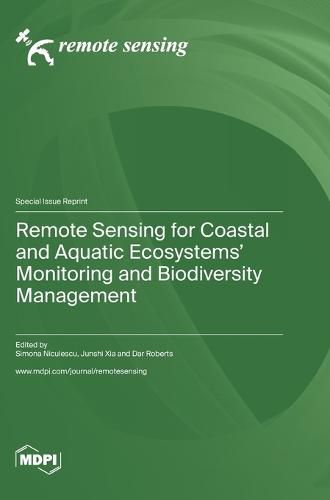Readings Newsletter
Become a Readings Member to make your shopping experience even easier.
Sign in or sign up for free!
You’re not far away from qualifying for FREE standard shipping within Australia
You’ve qualified for FREE standard shipping within Australia
The cart is loading…






This title is printed to order. This book may have been self-published. If so, we cannot guarantee the quality of the content. In the main most books will have gone through the editing process however some may not. We therefore suggest that you be aware of this before ordering this book. If in doubt check either the author or publisher’s details as we are unable to accept any returns unless they are faulty. Please contact us if you have any questions.
Environmental management and the preservation of biodiversity are widely considered a priority in the context of accelerating global changes affecting the physical and biological resources of our planet. This Special Issue of the journal will focus on "Coastal and Aquatic Ecosystems". The coastal region is a transition area between terrestrial and marine ecosystems. This transition area is now considered an important component of the biosphere, both in terms of ecosystems' diversity and in the provision of resources and services. Moreover, the coastal region is home to a significant number of distinct biological communities, including coral reefs, mangroves, salt meadows and wetlands, phanerogam meadows, and kelp forests, estuarine assemblages or coastal lagoons, forests, and grasslands. The diversity of coastal ecosystems is directly threatened by human activity.
Remote sensing meets this challenge by offering a wide range of standard products on environmental coastal condition, thanks in particular to various state-of-the-art sensors. The development of innovative methods based on the integration of multi-source, multi-resolution, and multi-temporal images offers promising prospects for considering the different scales of ecosystems. Consequently, the products derived from remote sensing contribute to the development of temporal and spatial indicators for better knowledge and management of coastal and aquatic ecosystems.
$9.00 standard shipping within Australia
FREE standard shipping within Australia for orders over $100.00
Express & International shipping calculated at checkout
This title is printed to order. This book may have been self-published. If so, we cannot guarantee the quality of the content. In the main most books will have gone through the editing process however some may not. We therefore suggest that you be aware of this before ordering this book. If in doubt check either the author or publisher’s details as we are unable to accept any returns unless they are faulty. Please contact us if you have any questions.
Environmental management and the preservation of biodiversity are widely considered a priority in the context of accelerating global changes affecting the physical and biological resources of our planet. This Special Issue of the journal will focus on "Coastal and Aquatic Ecosystems". The coastal region is a transition area between terrestrial and marine ecosystems. This transition area is now considered an important component of the biosphere, both in terms of ecosystems' diversity and in the provision of resources and services. Moreover, the coastal region is home to a significant number of distinct biological communities, including coral reefs, mangroves, salt meadows and wetlands, phanerogam meadows, and kelp forests, estuarine assemblages or coastal lagoons, forests, and grasslands. The diversity of coastal ecosystems is directly threatened by human activity.
Remote sensing meets this challenge by offering a wide range of standard products on environmental coastal condition, thanks in particular to various state-of-the-art sensors. The development of innovative methods based on the integration of multi-source, multi-resolution, and multi-temporal images offers promising prospects for considering the different scales of ecosystems. Consequently, the products derived from remote sensing contribute to the development of temporal and spatial indicators for better knowledge and management of coastal and aquatic ecosystems.